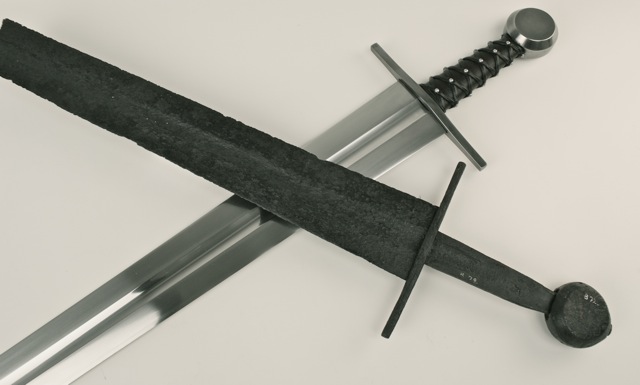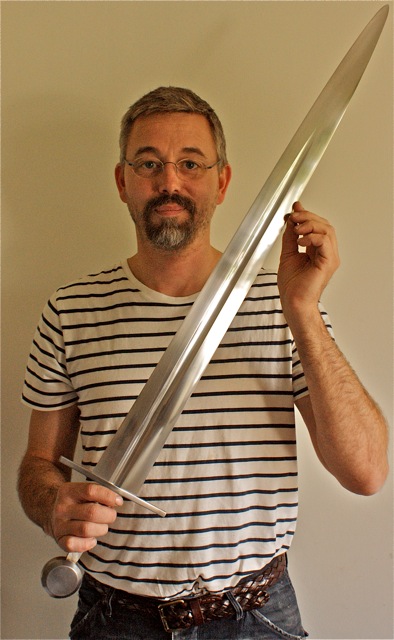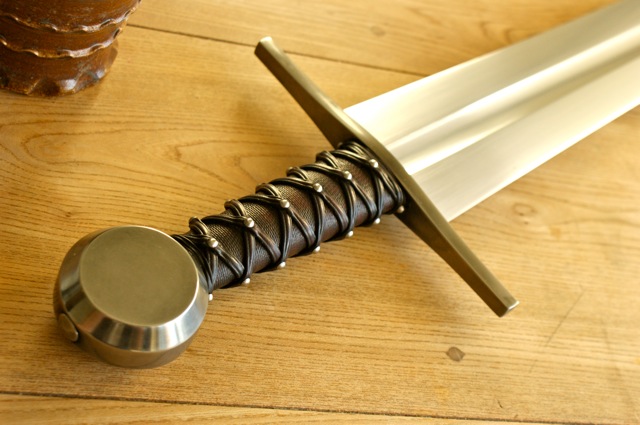In medieval times, in the 13th or perhaps even 12th C, there was already a harbour here. Cargo was reloaded for transport above the rapids. On higher ground, overlooking the harbor was a manor house that belonged to the crown. One of the King´s houses, that could welcome the monarch and his ambulating court. It was common practice that the King moved about between different locations, to make sure he maintained good contacts with the lands under his rule. It was also a good way to spread the effects of enthusiastic feasting that invariably took place wherever the King put up with his house hold.
Apart from being a place of logistic and strategic importance, the rapids of Fyris river was also a place of political importance.
The swords that were found may have been dropped into mud or shallow waters while being taken from a boat. Perhaps it is more probably that they were lost in a skirmish or attack on the harbor, sine one of the swords were found broken in a way that is fairly typical for battle damage.
Together with many other weapons found in the river, the swords were deposited in the archaeological collection of Uppsala University.
Back in 2003 Eric McHugh and I visited the store rooms on one of his study trips. We documented dozens of axes, spears and swords from bronze age up to renaissance. Among all the swords we measured that day, the B78 was perhaps the one that made the strongest impression on me. It was the broken sword of those three that was found back in the 19th C. Very broad in the blade, but made with a deep fuller and a thin cross section, it spoke to me of a blade smith with very interesting and specific ideas about sword design. I had a feeling I could learn much by studying this sword closer.
Over the last year I have been working on a hypothesis for an original medieval principle of sword design. A first presentation of this theory shall be published early 2012, so I will not go into details about it in this post. It turned out to be a handy tool to reconstruct the original shape of the broken B78.
When you see this sword first hand, you get an impression of it being made to a scale slightly larger than life. It would fit someone of rather sturdy built, but despite its hefty presence, it does not feel heavy as you wield it.
The blade is 72 millimeter wide at the base and some 830 millimeter long. Total length is 999 millimeter. Weight is a hefty 1414 grams, but it feels lighter in the hand. The blade has a heft that leads in the cut, but at the same time it has an agile feel to it.
It is interesting to study blades that are extreme versions of types. This sword was made by someone who appreciated the importance to reduce all "dead meat" in the blade. Cross section and edge geometry is proof of very effective use of material.
Below are some images of the finished sword:
Thanks for looking!

The reconstruction together with the original.

Semi-finished sword with a rather worn looking fellow, to show its scale.

Close-up of hilt

Detail of criss-cross binding